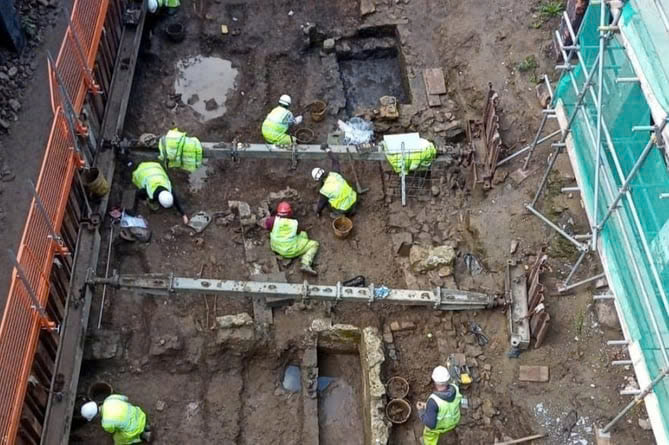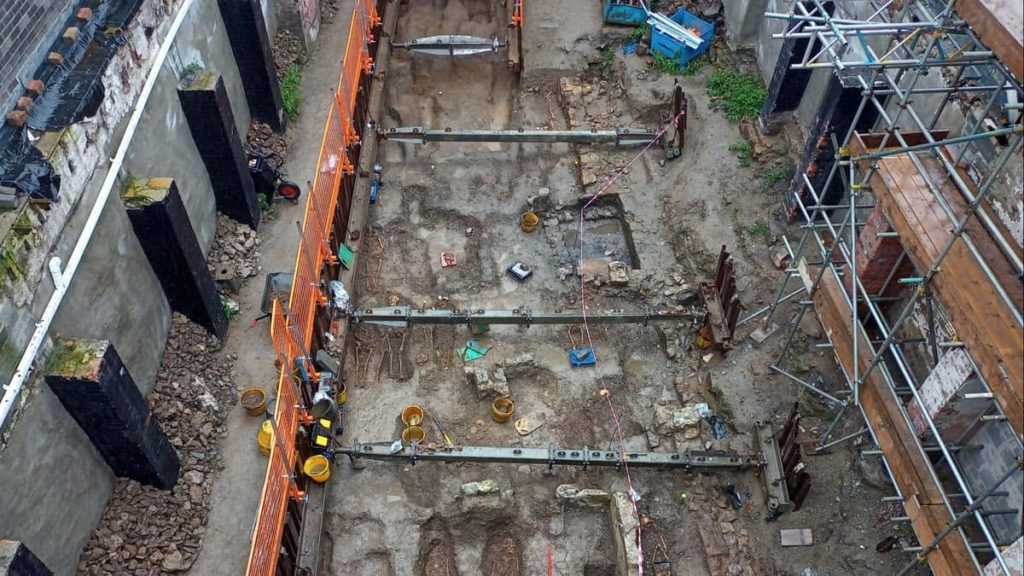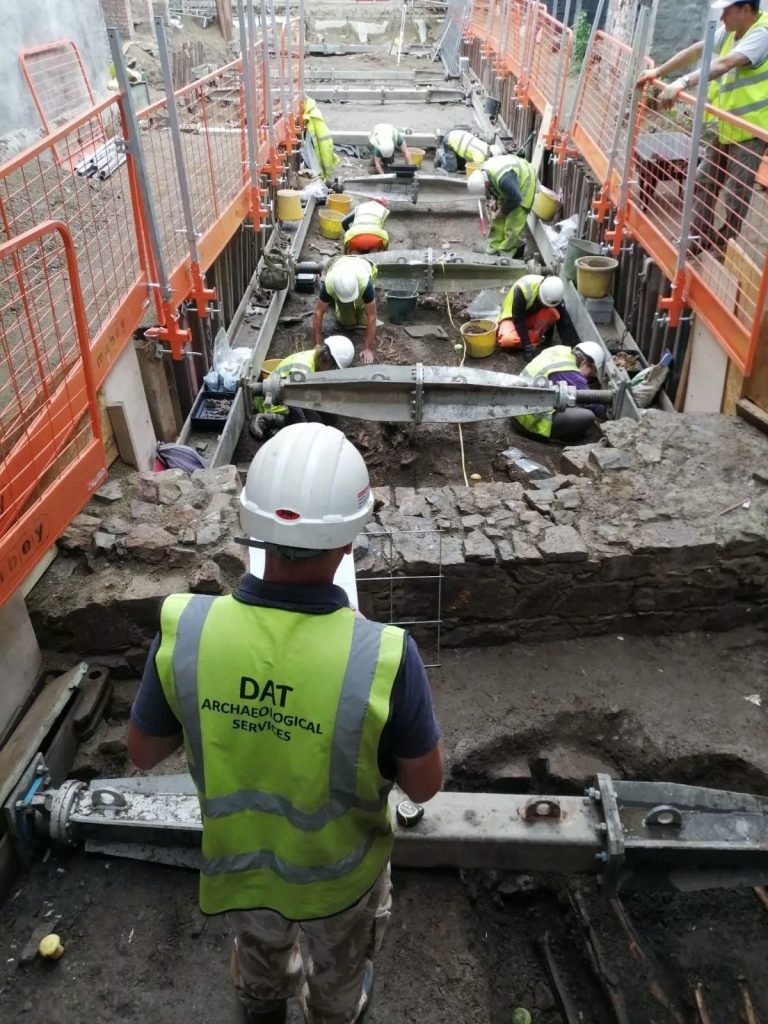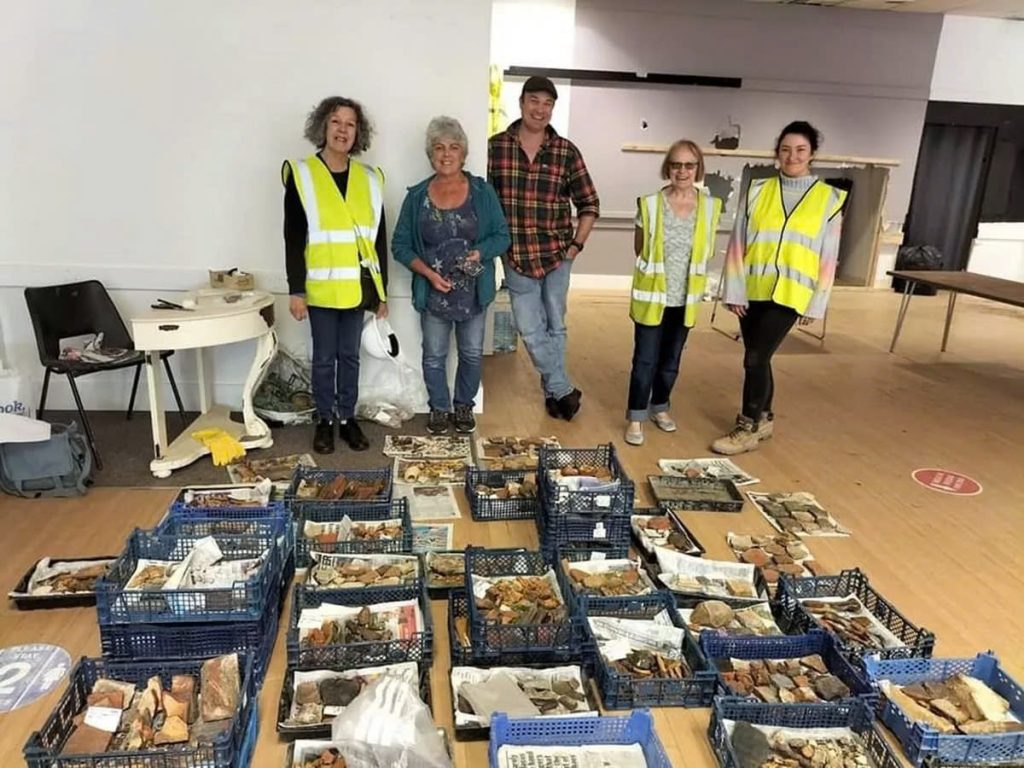In a groundbreaking archaeological find, researchers have uncovered the skeletal remains of more than 240 individuals, including over 100 children, beneath the former Ocky White department store in Haverfordwest, Pembrokeshire, Wales. Alongside these human remains, evidence of a medieval priory has come to light, offering a rare glimpse into the region’s deep history. Experts have deemed the discovery “hugely significant,” as it unravels layers of the past dating back to the 13th century.
St. Saviour’s Priory: A Medieval Landmark Reemerges
The excavation site is believed to be the historic location of St. Saviour’s Priory, an establishment founded around 1256. Historical records reveal that King Henry III played a pivotal role in its creation, providing financial support in 1246 to help the friars construct a church. Additional funds followed a decade later, enabling the expansion and relocation of the priory. For centuries, St. Saviour’s Priory thrived as a center of religious and communal life, only to face financial challenges in the early 16th century. Its decline culminated in its dissolution in 1538 during King Henry VIII’s sweeping campaign against monastic institutions.

This once-prominent religious site remained hidden for centuries, its memory preserved only in historical documents and local place names—until now. The excavation has revealed not only the physical remnants of the priory but also the stories of those who lived and died in its shadow.
Insights into Life and Death in Medieval Wales
The discovery of the skeletal remains provides a window into the harsh realities of medieval life, particularly the challenges of survival and the fragility of childhood. According to Andrew Shobbrook, site supervisor from Dyfed Archaeological Trust, approximately half of the recovered remains belong to children, many of whom were infants under the age of four. This grim statistic underscores the high child mortality rates of the medieval period, a time when disease and poor living conditions took a devastating toll on young lives.

Additionally, some of the adult remains show signs of injuries consistent with violence, including evidence of trauma that may be linked to the 1405 siege of Haverfordwest. During this tumultuous period, French forces and Welsh rebels laid siege to the town, leaving a mark not only on its history but also, it seems, on the bodies of its inhabitants. These findings add depth to our understanding of the struggles faced by those who lived during this era, from the hazards of battle to the daily challenges of existence.
A Journey Through Time: From Priory to Department Store
The fate of St. Saviour’s Priory after its dissolution mirrors the changing landscape of Haverfordwest over the centuries. Once a thriving religious complex, the priory included dormitories, a hospital, stables, and a graveyard that may have been used until the early 18th century. Following its closure, the priory faded from the physical landscape, leaving little more than faint traces in local lore.
By the modern era, the site had been repurposed entirely, eventually becoming the location of the Ocky White department store—a bustling commercial hub for the community. The store remained a fixture of Haverfordwest until its closure in 2013, marking the end of yet another chapter in the site’s long and varied history.
The recent excavation has brought these layers of history to life, demonstrating how the land has continually evolved to serve the needs of its inhabitants. From its origins as a medieval religious center to its transformation into a cornerstone of modern commerce, the site reflects the resilience and adaptability of the local community.
What Comes Next: Preserving and Honoring the Past
The journey of discovery does not end with the excavation. Experts are now turning their attention to the analysis of the remains, aiming to piece together more details about the lives of the individuals buried at the site. Through advanced techniques in bioarchaeology, researchers hope to uncover insights into their health, diet, and daily lives, as well as the broader social and cultural context of medieval Haverfordwest.

Once the analysis is complete, the remains will be respectfully reinterred at a nearby location. This process ensures that those who were laid to rest centuries ago are honored, while also preserving this invaluable piece of Welsh heritage for future generations.
A Rediscovered Legacy
The discovery beneath the former Ocky White department store is more than just an archaeological milestone; it is a poignant reminder of the interconnectedness of past and present. As experts continue to study the site, they are uncovering stories that had been buried for centuries—stories of resilience, faith, and community.

This remarkable find not only deepens our understanding of medieval Wales but also invites reflection on the layers of history that exist beneath our feet. In the heart of Haverfordwest, what was once hidden has been brought to light, offering a rare and profound connection to those who came before us.





